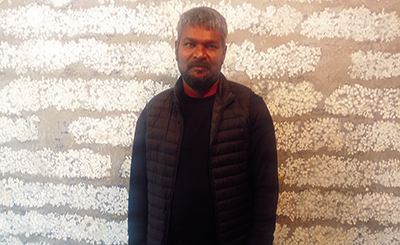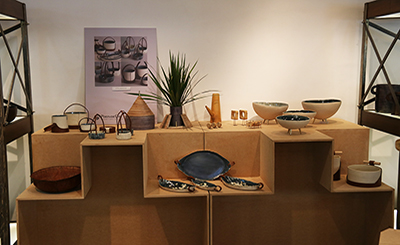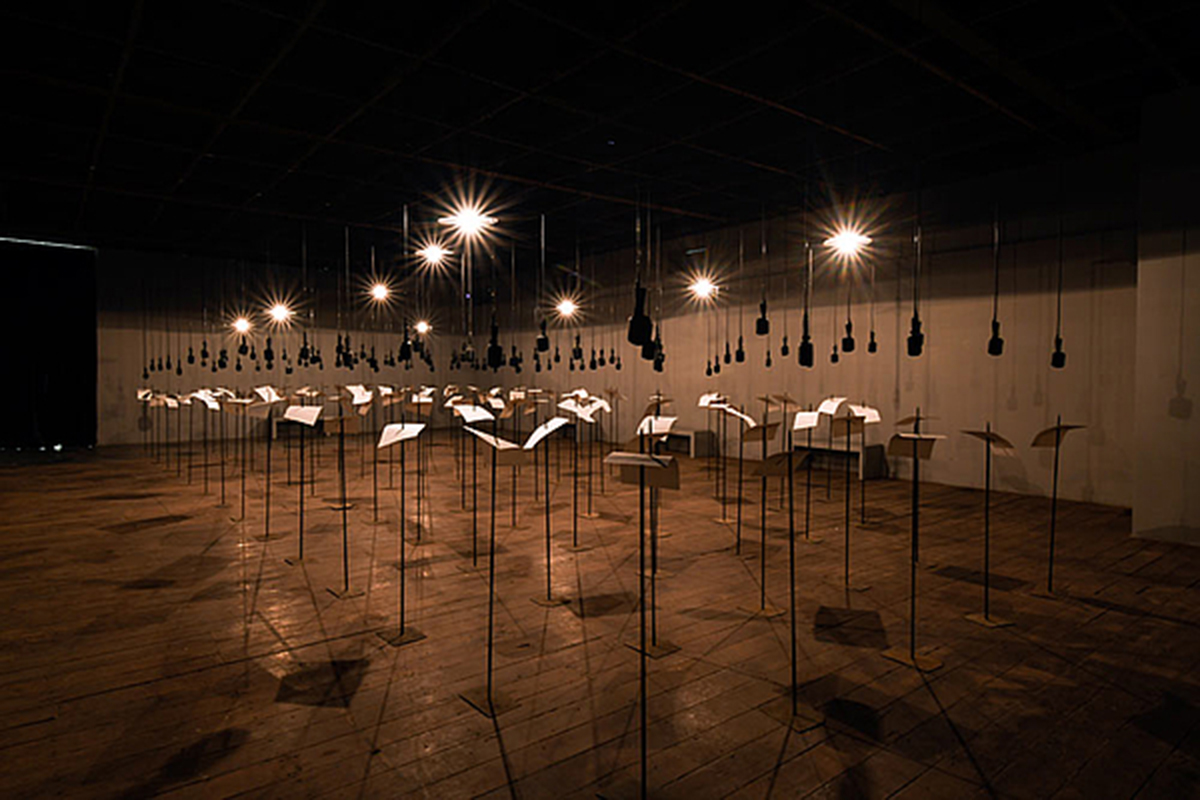
Shilpa Gupta, “For, in Your Tongue, I Cannot Fit — 100 Jailed Poets”. Installation of one-hundred speaking microphones that sit above corresponding stakes that each pierce a page of poetry. Recitals of a different poet’s work emanate from each microphone in a synchronized chorus. All of the writers who are represented, some living decades or centuries ago, were imprisoned for their poetry or politics. Photo: Courtesy of Kochi Biennale Foundation
Artists Ganesh Haloi, Nilima Sheikh, Atul Dodiya, Manjunath Kamath and Shilpa Gupta tread an eclectic path to create art. They have embraced different art forms and developed their own unique visual language that endorses the emergence of Indian art in the global contemporary art scene
On the Indian art firmament, Ganesh Haloi, Nilima Sheikh, Atul Dodiya, Shilpa Gupta and Manjunath Kamath are the artists who have intertwined poetry and painting to create brilliant pieces of art works. Their trajectory presents the evolution of Indian art over the decades through their paintings, sculpture, prints and installations. Indian artist preferring a more eclectic and populist approach to creativity have embraced different art forms. They have created their own unique visual language that endorses the emergence of Indian art in the global contemporary art scene. Inspired by their roots, they have given a contemporary perspective to their visual vocabulary.
Ganesh Haloi
Ganesh Haloi, 84, an eminent artist of the post-independence modern India, creates works that evoke a magical and surreal visual experience. Although he began with figurative art and portraits, he moved on to the art of the unknown and the unseen by using dots, lines and incredible colours, Haloi creates fields, houses, waterfronts, hills and other facets of nature in an intangible manner. Haloi’s subtlety and refinement can be attributed to his understanding the nuances of the Ajanta and Ellora caves. He portrays the delicacy of traditional Indian paintings with a modern bend, minimal in appearance. In his paintings (gouache on paper), dots and dashes become trees, water and green fields. He brings to his painting an inner silence and a deep understanding of the world.
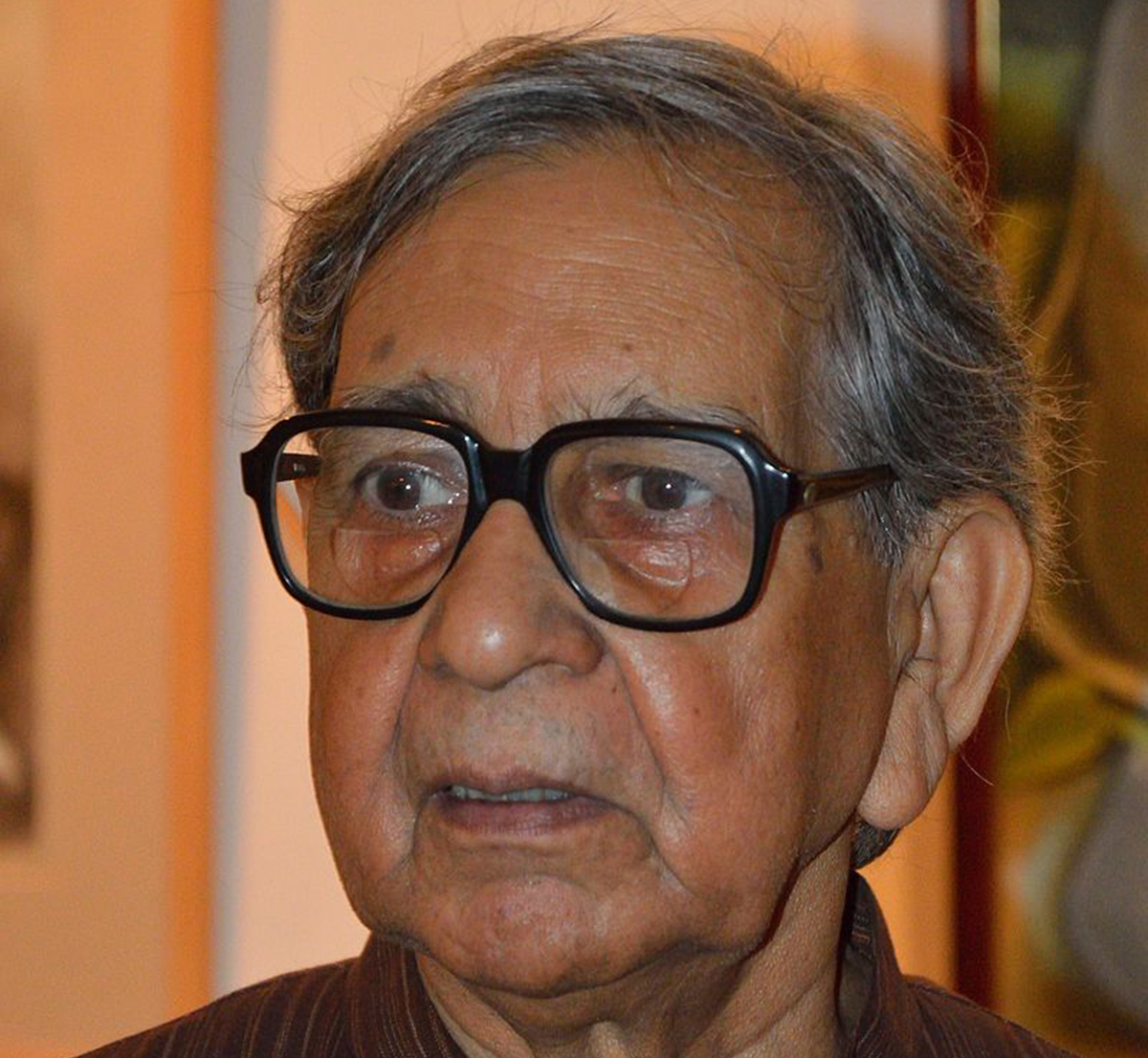
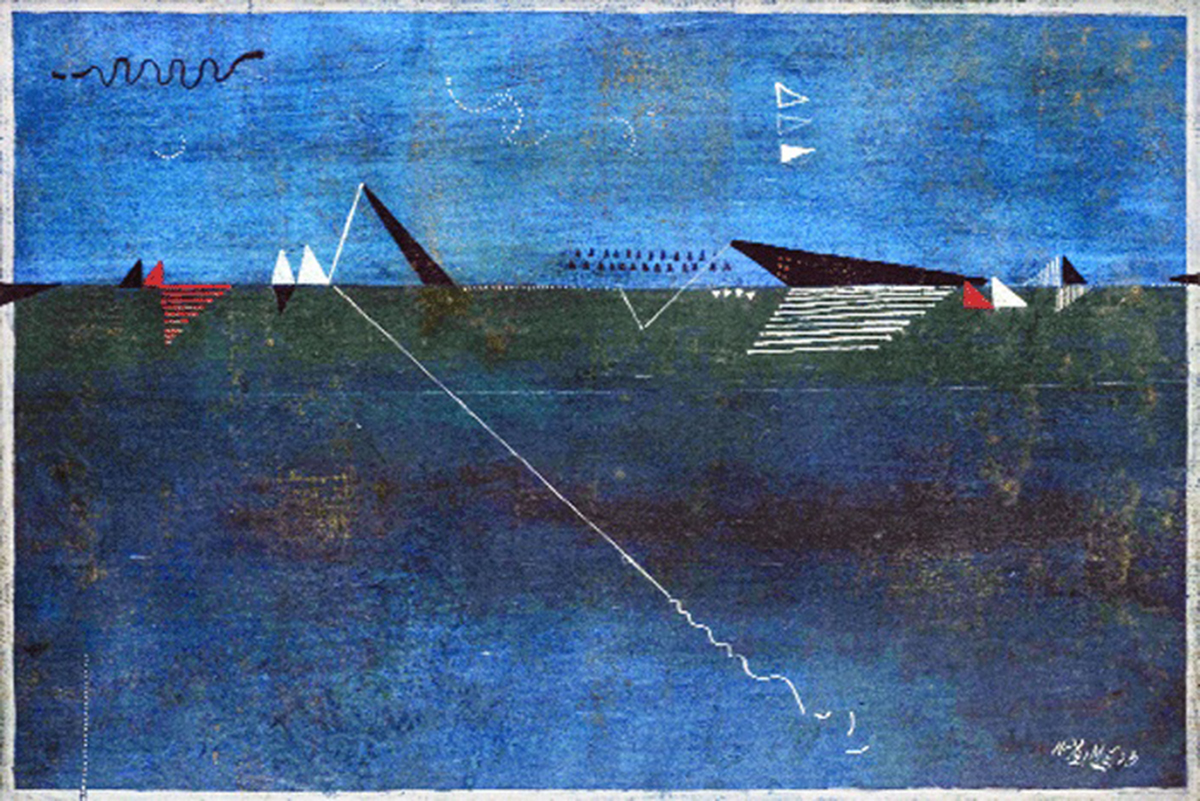
Untitled, landscape in cobalt blue, Ganesh Haloi
Born in 1936 in Jamalpur in Mymensingh (now in Bangladesh), he was uprooted from his place of birth in the wake of Partition in 1950. He graduated from Government College of Art & Craft, Kolkata in 1956 and joined the Archaeological Survey of India as a Senior Artist. He was deputed to work at Ajanta from 1957 to 1963. Then he joined Art College Kolkata as a lecturer in 1964 and taught there for 29 years.
In his textured abstract untitled landscape in cobalt blue, the artist shows a narrow white path meandering towards the banks of the river, while a boat languidly waits in the horizon, resonating memories of his place of birth. By using another shade of blue, he demarcates the sky. Haloi has a great sense of colour: his blues and greens do not collide, they complement each other. Through his visual narrative, he reveals that his voyage into self-discovery and experiment are intense. They reveal an intensity of colour, emotion and line that strike the eye and the imagination. For him, artworks are more important about space, childhood and memory.
Several of Haloi’s abstract paintings, along with two sculptures, were chosen by curator Adam Szymczyk for documenta 14 in 2017, a most prestigious art event that takes place every five years in Kassel, Germany. It brings to the forefront events and historical turning points that have left a deep impression on the world by engaging artists from all over the world.
Nilima Sheikh
Seventy-four-year-old Nilima Sheikh’s exquisite landscapes in tempera on handmade paper is greatly influenced by Chinese, Persian, Central Asian, pre-Renaissance European and North Indian schools of tempera painting. What emerges is a series of reflective works on paper and scrolls on canvas that show narratives on loss, migration and exile. Through the lyrical and feminine forms of her paintings, she displays an indigenous modernism. Her storylines create an attractive synergy with ancient and modern history.
Born in Delhi in 1945, Nilima Sheikh first studied at the Delhi University (1962-65) and then did her Master of Fine Arts (Painting) from the Faculty of Fine Arts, Maharaja Sayajirao University of Baroda (1969-71). KG Subramanyan and Mohammed Sheikh (who she later married), her lecturers, greatly inspired her.
Sheikh trained in Western-style oil painting and moved on to being a self-taught miniature painter and was influenced by pre-modern Rajput and Mughal court paintings, especially traditional tempera paintings like Pichwai and Thangka paintings. She has often used the shamiana, traditional South Asian tented pavilions where people assemble for ceremonies, theatre, memorial events, and political gatherings. This fragile paper architecture brings to mind the temporary shelters that offer rest to pilgrims and labourers.

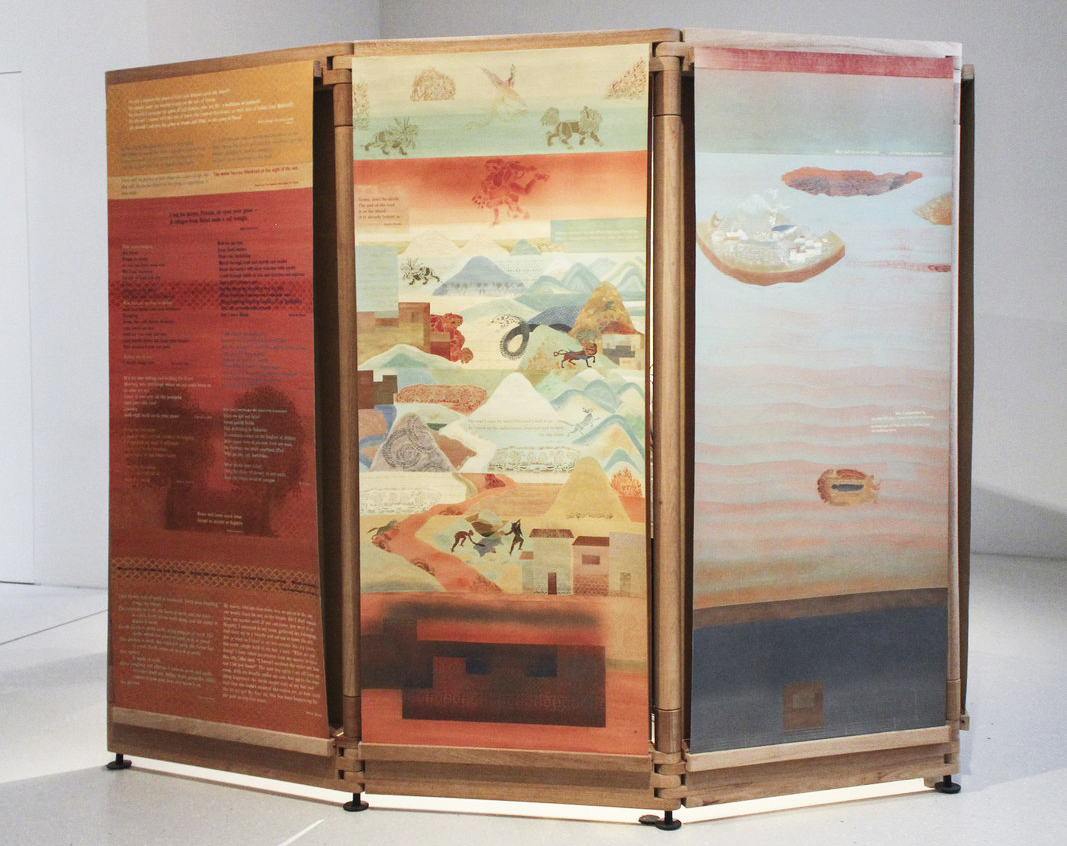
Nilima Sheikh, Terrain: Carrying Across, Leaving Behind, 2016-2017, Casein, tempera on sixteen canvas rolls, wood and metal. Photo courtesy of documenta 14
From April-September 2017, Nilima Sheikh’s Terrain: Carrying Across, Leaving Behind was shown at documenta 14 in Kassel, Germany. In this poetic work, the artist composed a 16-panel tempera, with painted and stencilled images and quotations from works of poets like Lal Ded, Agha Shahid Ali and Mahmoud Darwish, alongside Punjabi and Gujarati folk songs. It highlighted the theme of “resilience in the face of displacement” which has dominated Sheikh’s practice over the years. Her landscapes contained references to accumulated memories of different kinds — personal, art histories, and journeys across lands — and different kinds of histories of places like Kashmir, Punjab and Gujarat.
Nilima Sheikh painted a series of 12 small, tempera paintings, titled When Champa Grows Up, 1984. Each depicts an episode in the life of a young girl who has an arranged marriage and is later tortured and finally murdered by her in-laws (a dowry murder). This series was very close to her heart as she actually knew of someone who had been through this torture.
She had a close association with Kashmiri poet Agha Shahid Ali’s poems as his feelings for Kashmir matched hers. She had planned to paint an extensive piece on Kashmir when she came across Ali’s poems titled, The Country Without A Post Office. As the painter recounts: “He (Agha Shahid Ali) seemed to have said almost everything I had thought of saying and more! I found his poetry incredibly moving and also extremely visual, which gave me an entry to try and ‘illustrate’ text, something I had been trying to do for a while.” (Trace Retrace Paintings, Nilima Sheikh). Don’t Tell My Father I Have Died, 2002 and City From Where No News Can Come, 2002 are in sorrowful maroons and browns, with whites reeking of death. We Shall Meet Again in Srinagar, 2002 unfolds a tale of hope as a figure bids goodbye and promises to meet again. The synergy between her painting and the poetry was unique.
Atul Dodiya
Atul Dodiya’s work ranges from paintings and works on paper to street art and sculptures, encompassing numerous different styles and effortlessly interweaving Western art history with the history, myths, folklore, and popular culture of India. Mumbai (formerly Bombay), the city he grew up in and where he stays, is his inspiration. “I was born and brought up in Bombay, and the city’s incredible diversity has been a major influence on me,” says Dodiya, 61. While he focuses on the depictions of middle-class Indian life, he has also created unique paintings on the security shutters of shops throughout Mumbai. Even in his recent solo show, titled “Stammer in the Shade”, in New Delhi, he presented his fragmented abstract style and the shutter series. Interestingly, the Tate Modern in UK, for its Century City exhibition 2000, also commissioned his earlier shutter series, with the same title. They were his response to the 1992 Mumbai riot when everything was shut down because of a curfew that followed the riots. Ironically, even today, the shutters are down in the world, thanks to coronavirus. Dodiya has incorporated western art, cinema idols, verses by Maharashtra poets with great panache in has art works.
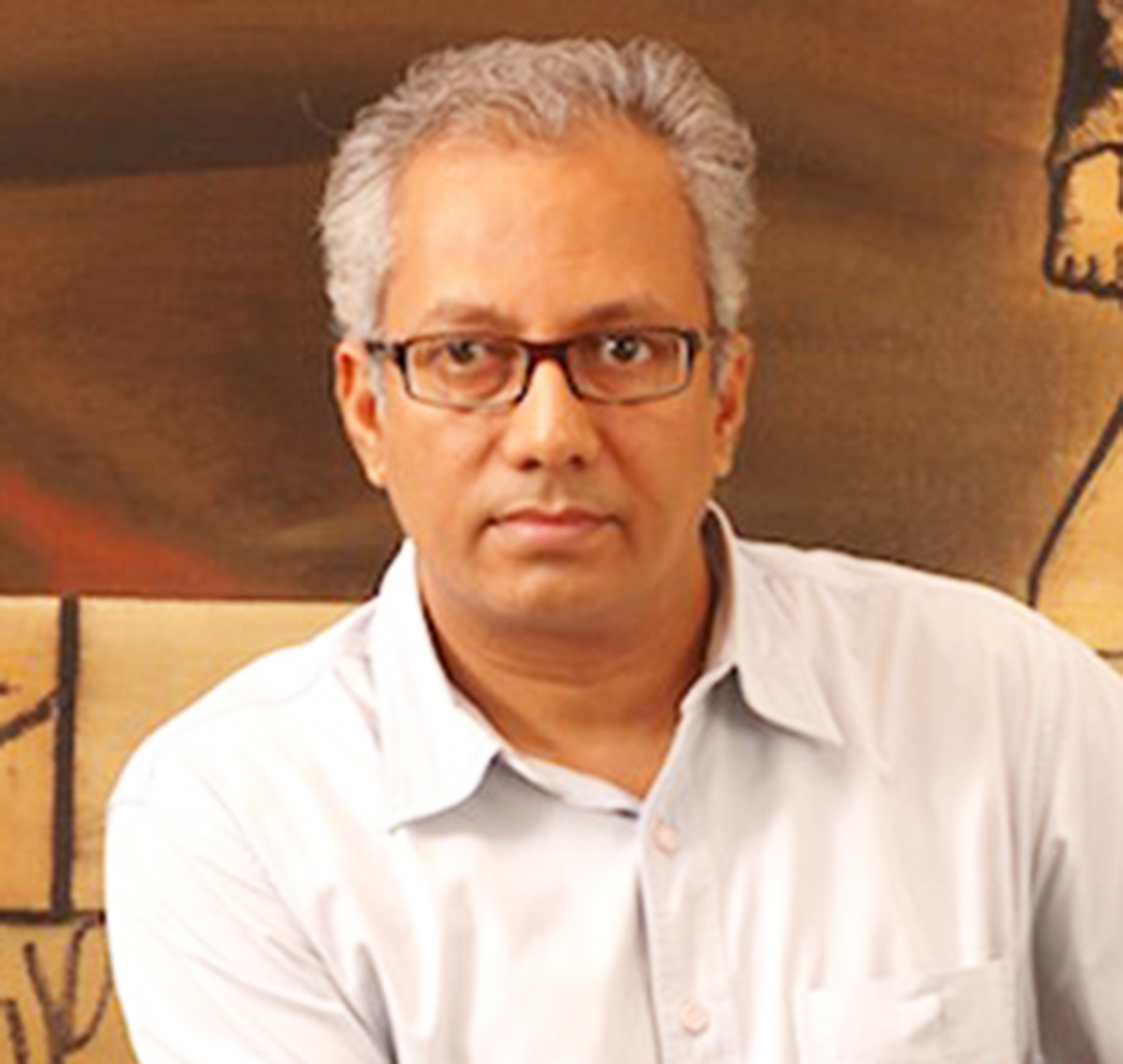
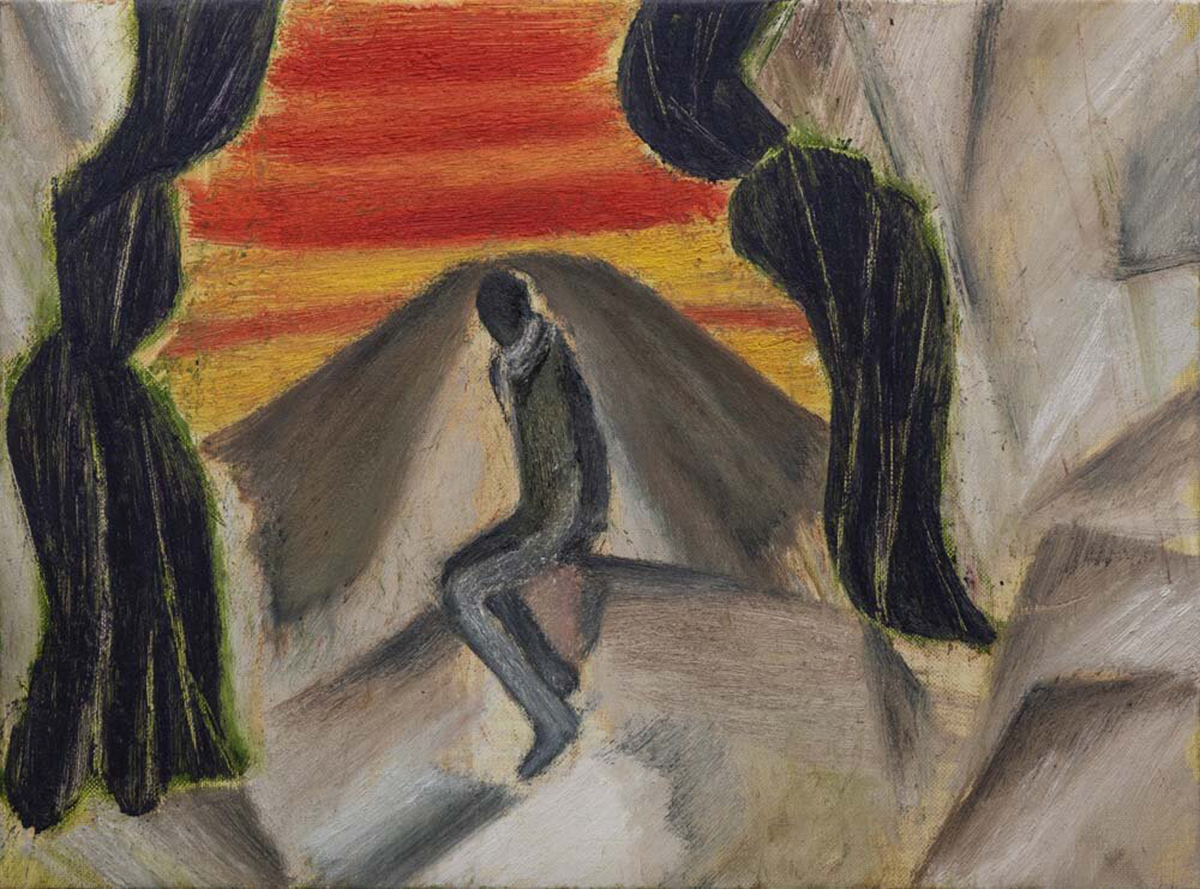
Atul Dodiya, Evening Thoughts, Oil on Canvas, from Stammer in the Shade, held between 29 January-29 February, 2020, at Vadhera Art Gallery, New Delhi. Photo: Vadhera Art Gallery
Mahatma Gandhi has been deeply embedded in Dodiya’s consciousness and he has celebrated the indelible memory of Gandhi, his philosophy, his ideas of peace and non-violence, democracy and freedom, and his politics. The artist realised that Gandhi was a pioneer of conceptual art long before it became poplar. He feels Gandhi’s ashram, the salt march and non-corporation movements were conceptual idea. That is why, in Bapu at Rene Block Gallery New York, 1974, Dodiya places Gandhi next to Joseph Beuys, a well-known German conceptual artist of that time. From the early Gandhi paintings to the shutter series, Gandhi is omnipresent in Dodiya’s works. Recently, his work was exhibited at the Indian Pavilion at the Venice Biennale in 2019, where the theme was “150 years of Mahatma Gandhi”.
Dodiya, born in 1959, began exhibiting and selling his work in the early 1980s, following his graduation from Sir J J School of Art in Mumbai where he received his Bachelor of Fine Arts degree. He furthered his academic training at the École des Beaux-Arts in Paris from 1991 to 1992, subsequent to a scholarship awarded by the French Government.
Manjunath Kamath
Artist Manjunath Kamath, 48, the ultimate storyteller, uses paintings, sculptures and digital prints to take the viewer on a journey filled with eclectic works of fantasy and realism. Through his techniques and his eye for diversity, he can convert any medium into a captivating piece of art. His extraordinary terracotta sculptures, paintings and visual prints reveal his versatility. Born in Mangalore, India, in 1972, Kamath did his BFA (Bachelor of Fine Arts) from Chamarajendra Academy of Visual Arts, Mysore; He was the Artist in Residence School of Art & Design, University of Wales Institute, and Cardiff, UK, followed by the Charles Wallace Scholarship, UK.
Kamath is a purist and his first love is terracotta. “I thought fiberglass is too synthetic to work with. I felt nothing could be as original and natural like terracotta.” Not surprising that his studio is full of terracotta art works. Some are his creations while others were collected over the years. Malechavilasi, a coloured terracotta piece, shows two figures from different faiths, united together as they sit in yoga pose opposite each other. The one facing could be a yogi with a hair caught up in a knot. Opposite him is the angel with her back to the viewer. Together, they are united as one, creating a sheer vibrancy.
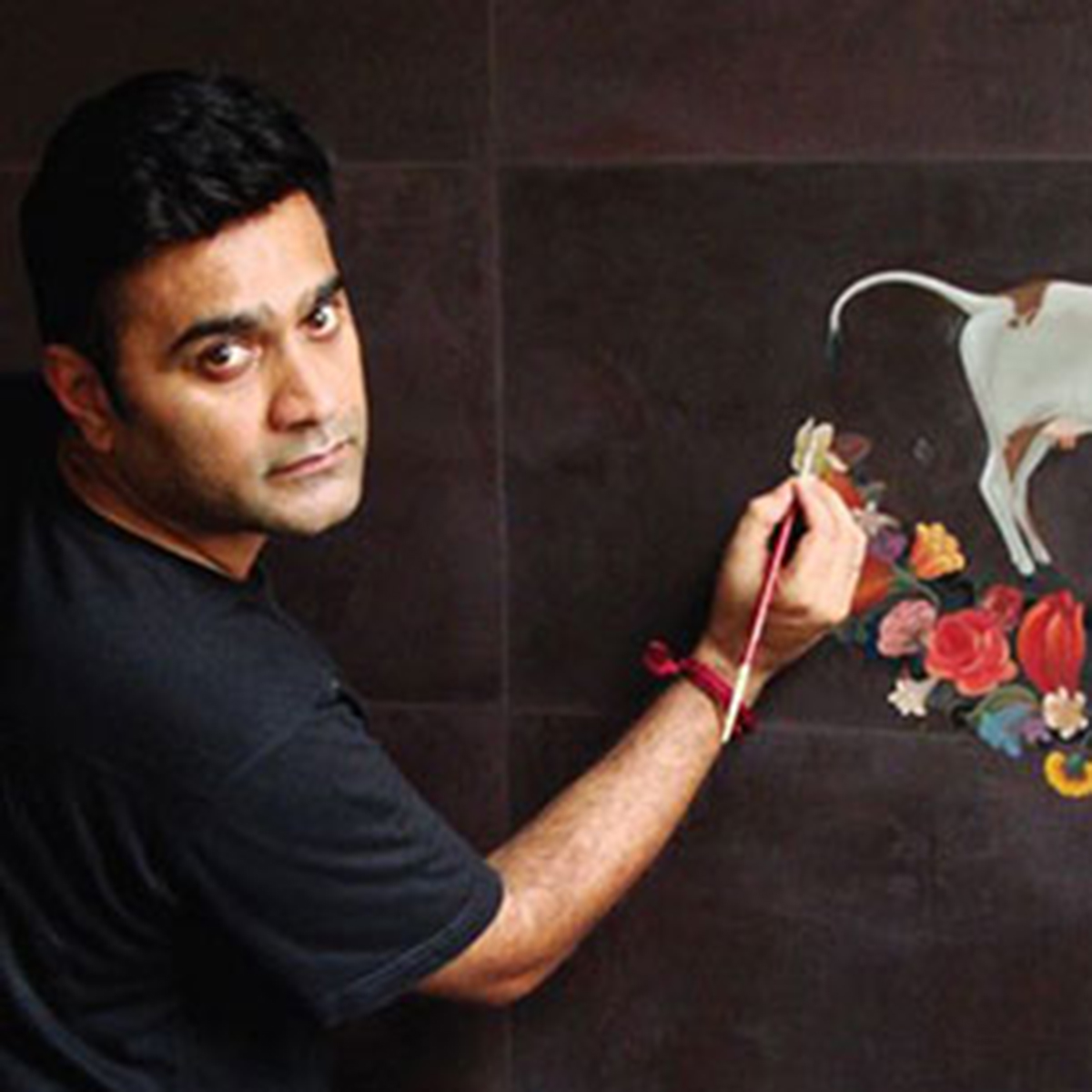
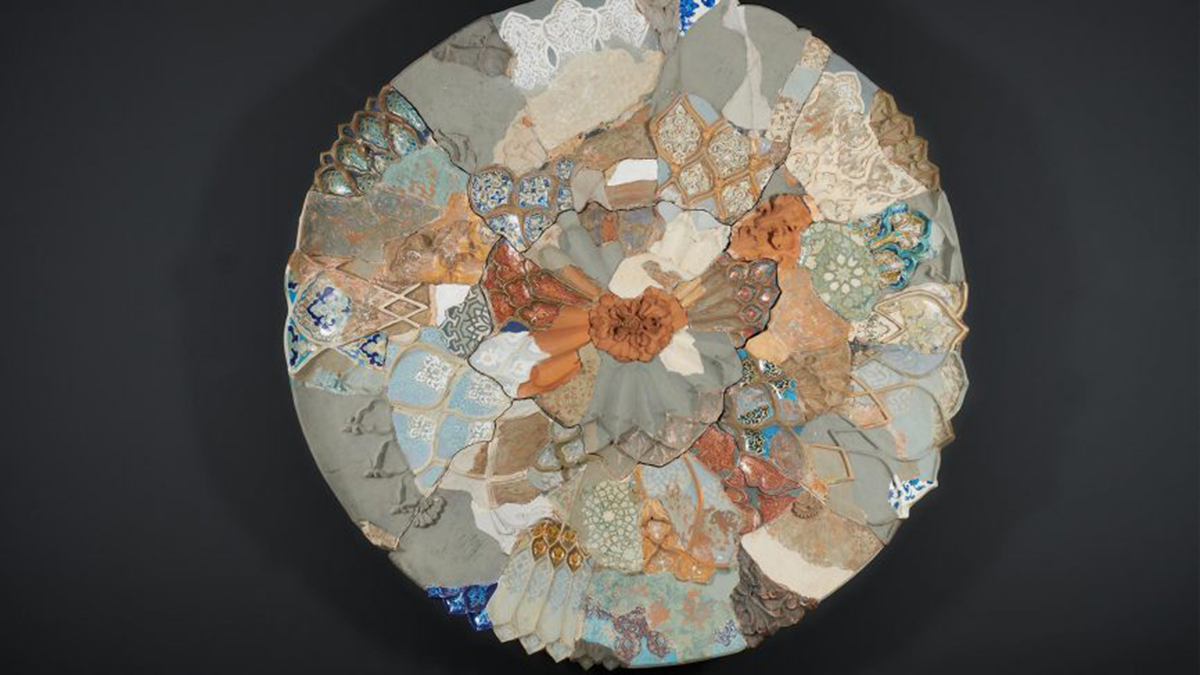
Manjunath Kamath, Unfolding Moon, Painted Terracotta. Photo courtesy of Gallery Espace, New Delhi.
Kamath’s Untitled gauche and acrylic on paper have rich colours and patterns strewn around blank spaces. They are not always connected. In some parts, they are exquisitely detailed, leaving some unfinished. “The fragmented forms often stimulate the imagination of the viewer, drawing them into completing the narrative and creating imageries that seamlessly connect the ordinary with the extraordinary, evoking a sense of familiarity and alienation at the same time.”
In the digital print, How Come He is Here, the artist has juxtaposed Raja Ravi Varma’s Shakuntala, with Sita’s Caravaggio mythical images creating fantasy realism. He has inserted a plane, cupid and Superman to add to the fun. Why is the woman pouring tea over the head of the striding naked man? The artist leaves it to the viewer to decode. His mix of the bizarre and the surreal element is fascinating. The artist says, “The images of epics, Indian miniatures and the silk route influenced me. Place them together and they tell another story. It transforms the image as once conceived. Even in the Ramayana, the glimpses of Islamic influences emerge.”
Kamath, known for his spontaneous drawings, decided to make the walls of the Gallery Espace in Delhi his canvas and painted relentlessly on the walls for an entire week for his Conscious-Sub-Conscious 2010 project. The end result was dramatic and fascinating.
Shilpa Gupta
The Indian art, comprising mainly paintings and sculpture, is also focused greatly on installations, and Shilpa Gupta is one of the leading artists of this genre. Born in Mumbai on 1976, she graduated from Sir J J School of Art in Mumbai. Through her works, the artist questions frameworks that control borders, the institutions that control our freedom of speech. Her artwork may be rooted in the Indian context, but they also grapple with universal issues such as freedom and security.
Gupta uses soap, microphones, sign hoardings and books to engage audiences with wider and deeper issues. The artist also has a background in graphic design, and she has a remarkable ability to convert ordinary imagery into something reflective. For instance, she employed 2,400 bars of soap, engraved with the word Threat in her sculpture of the same name in 2009. She invited the audience to take a bar of soap away and use it if they wish, washing away any trace of any threat they may have encountered by the end of the exhibition. Terror and fear are weapons deployed by power-thirsty people to influence ordinary masses. They leave the individuals in a confused state, oblivious to the cause and reason of their actions.
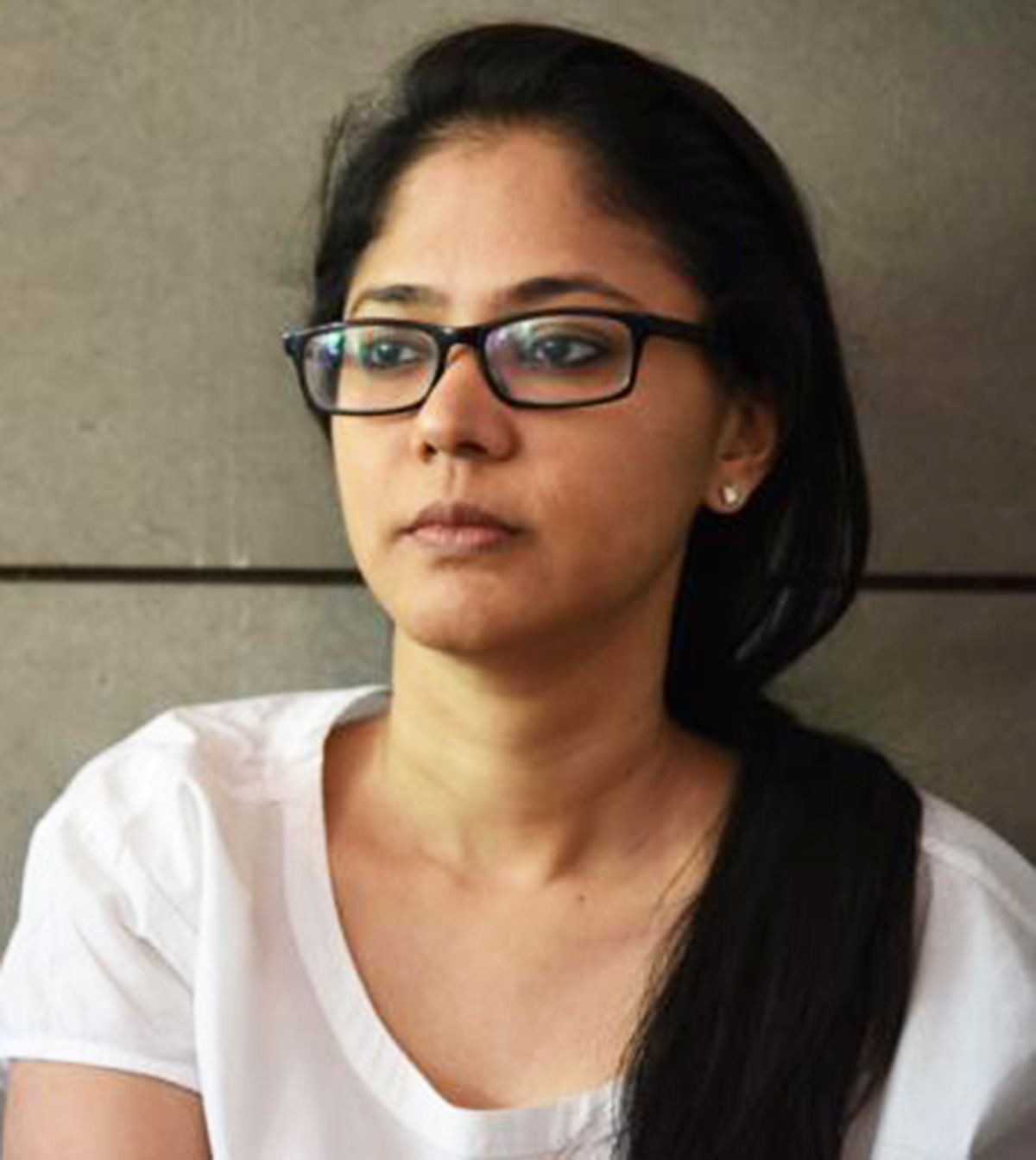
Shilpa Gupta. Photo courtesy of Studio International
Gupta’s most outstanding work is For, In Your Tongue, I Do Not Fit in a Darkened Room, titled after a poem by the 14th century Azerbaijani poet Imadaddin Nasimi, is an impressive artwork. She has incorporated poems by American poet Allen Ginsberg and 100 other poets who were imprisoned because of their poems. In the installation, there are 100 mikes, acting as speakers, suspended from the ceiling, reciting the poems in different languages. Below are poems written on sheets of paper held on stands that look like prison bars. Dim bulbs hanging above create the atmosphere of a prison cell. It’s truly mesmerising as the lines of each poet are heard through the microphone, they are then heard collectively through 99 poets, as though in solidarity. They are the voices of the unheard multitude.
Gupta and 52-year-old Rashid Rana positioned India and Pakistan at the 2015 Venice Biennale for the first time. In an expression of solidarity, the two countries, often in conflict, installed projects under a single title, “My East is Your West,” under the same roof in Venice’s 17th-century Palazzo Benzon. While exploring issues of border geography, class struggle, and identity in a region mired in political controversy, both artists bring to light the similarities of the two countries. In an ongoing performance, an actor writes on a long, scroll-like cloth that accumulates in a towering pile — its length represents a tiny fraction of the 3,400-km barrier between Bangladesh and India. Rana offers a live video feed that connects a room in the Palazzo to a small structure in Pakistan. The visitors at the Venice Biennale witnessed a concept that erases geographic boundaries and highlights the themes of globalisation.
The works of all five artists reveal the changing times of India, and the emergence of a fascinating art form. By taking a slice from the ancient artworks, the artists have created modern works that explore the international cultural social political pressures as well as their own personal experience.
More from Arts
Comments
*Comments will be moderated



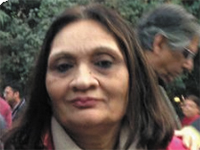
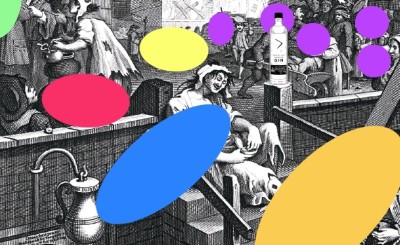
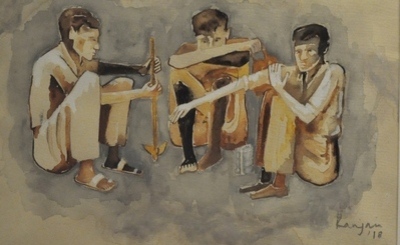
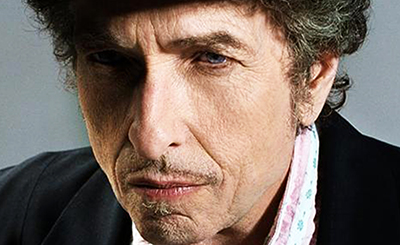
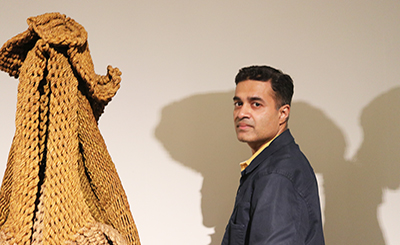
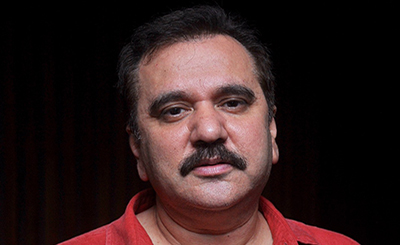
.png)
